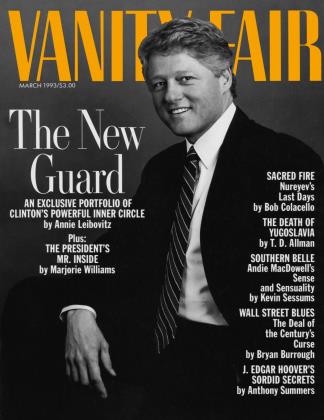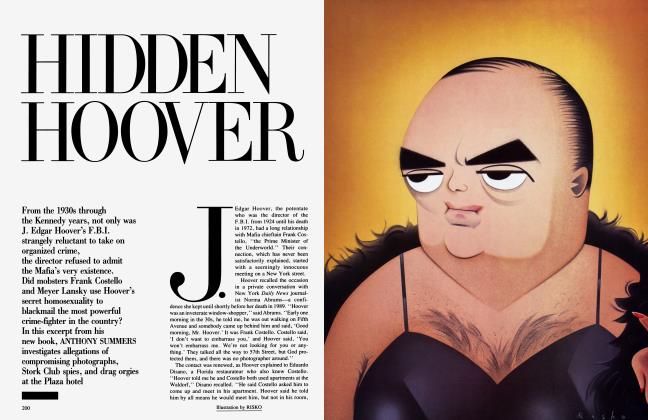Sign In to Your Account
Subscribers have complete access to the archive.
Sign In Not a Subscriber?Join NowThe Thomas Krens Affair
The Guggenheim's curator is drawing fire— but is all the fury justified?
Stately, tall Tom Krens enters his Guggenheim office looking not at all like the most fiercely criticized museum director in America. His smile is soft, yet wicked, the smile of a cat that's swallowed a canary.
For most of his four-year reign, Krens has been painted as the art world's greatest philistine. His critics—principally Mr. Smooth, the art writer John Richardson, and Mr. Blunt, the art critic Michael Kimmelman of The New York Times—claim that in floating $54.9 million in tax-exempt bonds to pay for the extension designed by Charles Gwathmey and to fix up the decaying Frank Lloyd Wright landmark, Krens, a heathen Yale-business-school graduate, has jeopardized the Guggenheim. Why, he's got to go from 500,000 visitors yearly to a stratospheric 750,000 just to tread water! Therefore, says Kimmelman, Krens is planning the ultimate heresy: to diminish the museum's collections for short-term bucks by shipping art willy-nilly to "franchise" Guggenheims he wants to create in such hot spots as Salzburg, Austria, and Bilbao, Spain.
The truth is there are problems. ' 'We're in a perpetual state of anxiety about how to handle our crowds," Krens moans. Attendance, at seven dollars per head, has leapt since the museum reopened last summer: 640,000 in less than six months. At that rate, the 1.3 million visitors in 1993 will generate $9.1 million; with corporate memberships, grants, and the like, that should be more than enough to help the Guggenheim meet its $26 million budget and the principal payments that begin in December. Much of the excitement, clearly, has been generated by the new extension.
What about those ' ' franchises ' ' ? The host countries, Krens explains, are paying to build them; they're the ones eager to make satellite connections, because the Guggenheim has one of the greatest basement stores of lendable modem art (far more, say, than creaky MOMA). In return for stocking Bilbao's projected 250,000-square-foot museum with art that will eventually circulate back to New York, the Basque government has pledged a $20 million contribution to the Guggenheim Foundation and will repay all operating costs.
No better evidence of the museum's robust health can be marshaled than the Picasso sculpture show opening March 19. It's the artist in a seldom seen and singularly powerful role, the maker of welded steel and iron pieces in the late 20s and 30s. A blockbuster? No, no, the White Knight hastens to say. "It's modest, in human scale—210 works in all, including 100 drawings. It's a fascinating period with works linked to Russian Constructivism, the 'found object,' the time when industrial extrusions, formations of cable and steel, became the vocabulary of sculpture, replacing bronze casts and clay, creating amazing freely determined graphic elements."
Is this a well-rehearsed rap? I subject Krens to a nasty test. Behind him are two abstract paintings. Name them, I demand.
He gets the easy one at once. "Vasily Kandinsky, Improvisation 28." Then an embarrassing pause. The first look of real doubt and anxiety crosses Krens's brow. "Wait! It's Robert Mangold."
He's right. The hesitation? Oh hell, I couldn't identify half the stuff in my Metropolitan office, either.
As I leave, I note that the guy waiting to see Krens is Robert Wilson. Talk about creative assets!
Back off, Mr. Smooth and Mr. Blunt. The philistine is doing just fine.
THOMAS HOVING
 View Full Issue
View Full Issue






Subscribers have complete access to the archive.
Sign In Not a Subscriber?Join Now